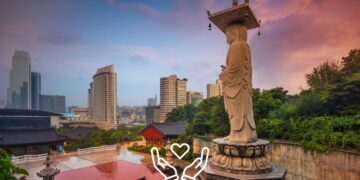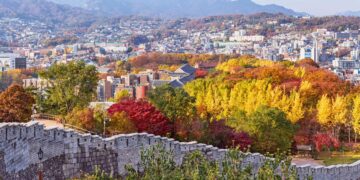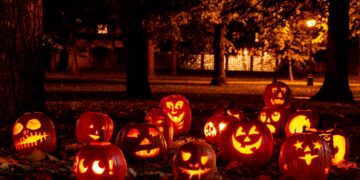Last Updated on 2 years by admin
Embarking on an Ulsan travel guide reveals a treasure trove of experiences and hidden gems waiting to be discovered. Beyond the well-trodden paths, Ulsan’s hidden gems beckon travelers to explore the uncharted corners of this captivating city. With many Ulsan attractions ranging from serene parks to historic temples, every nook and cranny tells a story, ensuring that every traveler leaves with a unique tale.
Nestled in the southeast corner of South Korea, Ulsan boasts its rank as the seventh-largest metropolitan city. This urban hub shines with its delightful nature, history, and modernity mix. Discover the unexpected beauty and fascinating places Ulsan, the bustling metropolitan city in South Korea’s southeastern region, has to offer.
Bucket List Attractions in Ulsan
Daewangam Park: An enchanting seaside haven
Daewangam Park is a seaside park located at the end of the southeasternmost point of Ulsan, facing the East Sea. It is one of the popular attractions in Ulsan for locals and tourists. It is known for its beautiful scenery, walking trails, and lighthouse.
The park is home to various trees, including pine, cherry blossom, magnolia, camellia, apricot, and forsythia. The walking trails wind through the forest, offering stunning views of the sea and the surrounding mountains. The park’s most iconic landmark is Daewangam Rock, a large rock formation that resembles a dragon rising from the sea. The rock is connected to the mainland by an iron bridge, and an observation tower on top of the rock offers panoramic views of the area.
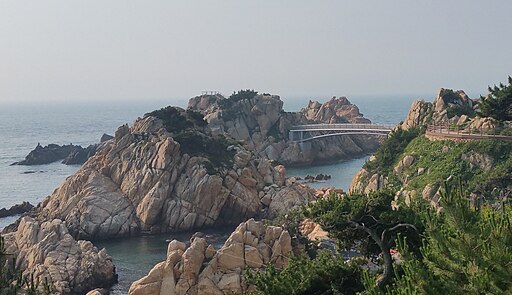
Daewangam Park is also a great place to enjoy the outdoors. The park has many picnic areas and barbecue grills. The beach is a popular spot for swimming, sunbathing, and fishing.
If you are looking for a beautiful and relaxing place to visit in Ulsan, Daewangam Park is worth a visit.
Ulsan Grand Park: A city’s oasis
Ulsan Grand Park is the largest urban park in South Korea, with an area of 3.69 square kilometers (912 acres). It is located in Nam-gu, Ulsan, and is home to a variety of attractions. They, including a large swimming pool, a theme park, an outdoor concert area, and a multipurpose sports field.
The outdoor theme park has multiple amenities, including four different-sized ponds, a walking trail, playgrounds, an outdoor concert hall, squares, a multipurpose sports field, and picnic areas. The park is also home to a number of cultural facilities, including an art museum, an arboretum, and a botanical garden.
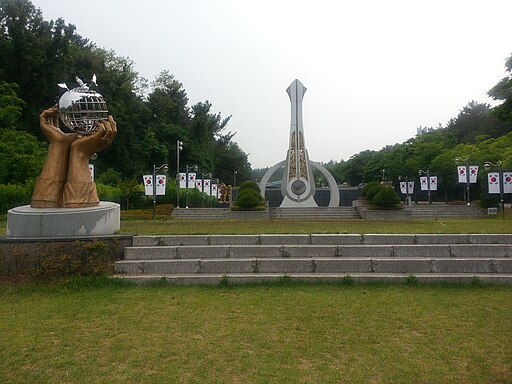
The park is a popular destination for locals and tourists alike and a great place to spend a day outdoors. It is especially popular during the summer months, when the swimming pool and outdoor theme park are open.
Ganjeolgot Cape: Your picturesque escape
Ganjeolgot Cape, situated a brief 20-minute drive from the entrance of Ulsan Nambu Ring Road, stands as a prominent lighthouse. During the blossoming of acacias along the coastline, extending from Ulsan to Busan’s Haeundae Beach, the air becomes infused with the delicate fragrance of these flowers. This stretch of road serves as an idyllic driving route, offering a harmonious blend of the graceful white acacia trees adorning the hills and intermittent vistas of the sea.
The landscape presents a magnificent tableau of the invigorating ocean juxtaposed with mist-kissed hillside views. Despite its close proximity to Ulsan Nambu Ring Road, the area’s scenic splendor bestows a sense of exotic allure.
The earliest glimpse of sunrise on the East Coast can be captured at Ganjeolgot Cape. This awe-inspiring spectacle unfolds a minute ahead of Cape Homigot in Yeongilman Bay and five minutes earlier than Gangneung’s Jeongdongjin. In the company of Jinha Beach and Seosaengpo Japanese Fortress, Cape Ganjeolgot has emerged as a novel magnet for tourists.
Revel in the grandeur of the bracing ocean panorama set against the ethereal backdrop of mist-crowned hills. Despite its close proximity to Ulsan Nambu Ring Road, the area’s picturesque grandeur adds a touch of exotic charm.
Taehwagang National Garden: Nature’s masterpiece
Nestled at the midsection of the Taehwagang River, the Taehwagang National Garden stands as a serene oasis in Ulsan. The Taehwagang River courses through the heart of Ulsan before merging into Ulsan Bay, ultimately connecting with the East Sea. Spanning 36 kilometers from east to west and 28 kilometers from north to south, the river basin consists predominantly of mountainous terrain.
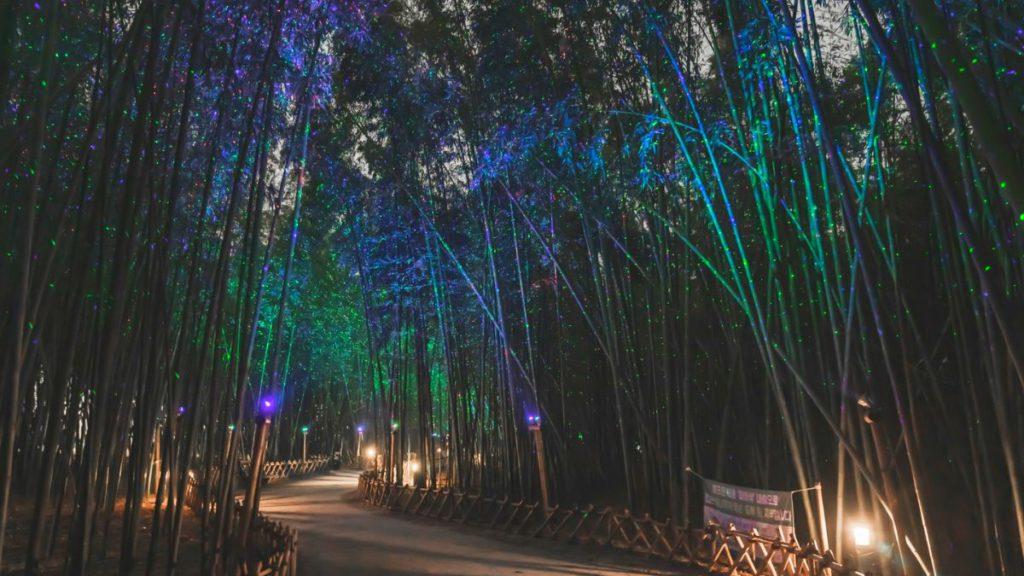
For an extended period, the area surrounding the midpoint of the Taehwagang River lay abandoned until it was designated as the Taehwagang National Garden. This sanctuary safeguards nature while providing a peaceful refuge for the residents of Ulsan, making it one of the must-visit Ulsan hidden gems.
Remarkably, the garden’s expanse is more than double that of Seoul’s Yeouido Park. It features natural water elements, a flourishing bamboo forest named the Simnidae Forest, and expanses of canola and forage barley fields. The Simnidae Forest faced the threat of demolition as part of governmental flood control initiatives, but it endures today due to the dedicated efforts of the community. The transformation into the current Taehwagang National Garden was brought about through preservation endeavors undertaken from 2004 to 2010.
Seoknamsa Temple: A journey through time
Positioned on the southern edge of the Gaji Mountain range in Ulsan, Seoknamsa Temple takes its place as one of the four principal Buddhist temples within Gajisan Provincial Park. Originally constructed in 824 A.D., the temple suffered destruction during the Japanese Invasions of Korea. Through a series of reconstructions, it has now blossomed into a complex of 30 distinct buildings, making it one of the must-visit Ulsan hidden gems.
Upon entering, a serene path shaded by a lush canopy of trees follows a meandering stream. It gently guides visitors toward the temple. A delightful forested walk lasting around 10 minutes culminates in the arrival at the temple precinct. The vibrant hues of the temple walls extend a warm welcome to all who approach. A standout feature within the temple’s grounds is the Three-story Pagoda, situated at the heart of the temple.
As history recounts, Monk Doui played a pivotal role in resurrecting this pagoda. He was driven by the aspiration that it would safeguard the nation from foreign incursions. Commanding attention from its central position within the temple, the pagoda stands as a captivating spectacle. It invites all to pause, find respite, and immerse themselves in the tranquility of the temple’s surroundings.
Wrapping Up
Ulsan attractions seamlessly weave the tapestry of nature, culture, and history from the whispering forests of Daewangam Park to the historical depths of Seoknamsa Temple. Whether seeking solace in a serene garden, chasing the earliest sunrise, or simply delving into South Korea’s vast cultural landscape, Ulsan offers an experience that imprints lasting memories through its various hidden gems. A journey to Ulsan isn’t just a tick on a traveler’s checklist but an immersive dive into a world where the past, present, and future harmoniously intertwine.
Related Posts
8,220 total views, 3 views today




